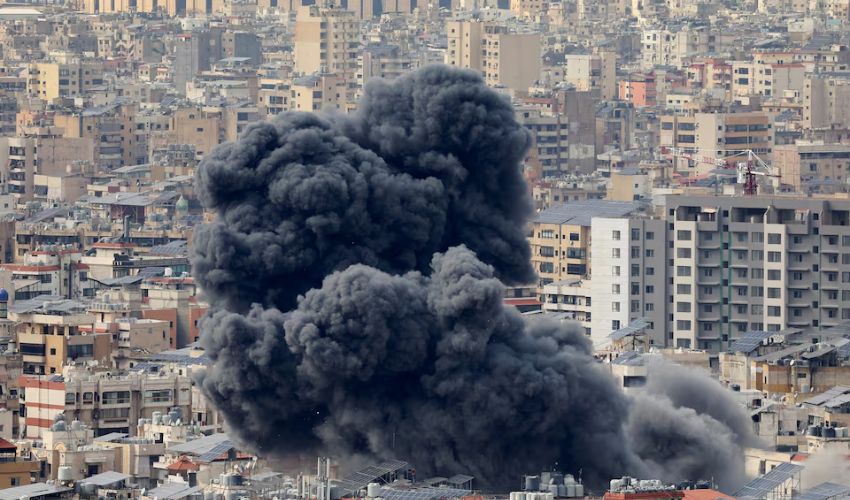The Hajj pilgrims, who stayed overnight in Muzdalifah, flocked to Mina on Sunday morning to perform four main rituals of Hajj. With hearts filled with joy and pleasure over performing the ritual of standing at Arafat, the high point of the annual pilgrimage of Hajj.
As per the Saudi Gazette report, on Saturday, masses of pilgrims embarked on a symbolic stoning of the devil under the soaring summer heat. The ritual marks the final days of the Hajj and the start of the Eid Al-Adha celebrations for Muslims around the world on Sunday, Dhul Hijjah 10, which is also known as Yaum Al-Nahr or the Day of Sacrifice.
On Sunday morning, crowds of pilgrims headed on foot to the stoning areas. Some were seen pushing disabled pilgrims on wheelchairs on a multi-lane road leading to the complex housing the large pillars. Most pilgrims were seen sweltering and carrying umbrellas to protect them against the burning summer sun.
After reaching Mina, they performed stoning at Jamarat Al-Aqaba and returned to their camps in the Tent City to take some rest before continuing perform other rituals.
After sunset on Saturday, pilgrims left Arafat and started heading for Muzdalifah, in an orderly, calm and dignified manner reciting talbiyah a great deal.
The pilgrims’ movement was complete amidst integrated services that the Saudi government has prepared so as to enable the pilgrims to perform their rituals with ease and comfort.
Upon their arrival in Muzdalifah, they offered the Maghrib prayer with three raka’a and Isha prayer in two raka’a at the time of Isha, combined and shortened, following the Sunnah of the Prophet (peace be upon him). They stayed overnight in Muzdalifah and headed for Mina after performing dawn (Fajr) prayer.
Upon reaching Mina, pilgrims performed stoning at Jamarat Al-Aqba (biggest pillar symbolizing Satan), following the Sunnah of the Prophet (peace be upon him).
They used seven pebbles for the stoning ritual. The pilgrims’ movement to hurl pebbles at Jamrat Al-Aqaba was smooth, orderly, and flexible on the floors of the giant Jamarat Bridge Complex with all the precautionary measures in place. Reaching the Jamarat, they stopped the chanting of talbiyah and started reciting takbeer (Allahu Akbar) while proceeding to perform the stoning ritual.
300,000 pilgrims can perform stoning ritual in an hour
Around 300,000 pilgrims can perform the stoning ritual at the facility in an hour. All the security, health, ambulance, hygiene and civil defense services are well in place at the Jamarat Bridge.
The security men were seen organizing the movement of pilgrims in the vast sprawling stoning area on the multi-level Jamarat Complex and at its entrances and exits. The heat-blocking coating of pedestrian paths in Mina leading to the Jamarat Bridge are giving some respite to the pilgrims under the scorching sun.
The General Directorate of Civil Defense has strengthened its preparations throughout the Jamarat facility and its surrounding areas to receive the pilgrims.
The directorate confirmed its readiness with teams and units deployed in the corridors of the bridge and at the main entrances, supported by manpower and technical equipment in specific locations, to provide civil defense and humanitarian services. The movement of pilgrims to and from the Jamarat Bridge was arranged in line with the preplanned schedule.
After performing the stoning ritual, the pilgrims sacrificed animals, and thus had a partial exit (first tahallul) from the state of ihram by shaving or cutting hair for men while women trim the length of a finger-tip from one strand of hair. They then changed back into normal clothing from ihram.
Pilgrims then proceeded to Makkah to perform Tawaf Al-Ifadah and sai’ (ritual of running between Safa and Marwah), two other pillars of Hajj. Those pilgrims who performed sai’ along with Tawaful Qudum (Tawaf of Arrival) need not perform it again.
With the performance of tawaf and sai’, pilgrims would exit completely from the state of ihram. In the remaining two or three days of Hajj, which are known as Ayyamu Tashreeq or Tashreeq Days, the only ritual to be performed is stoning at each of the three Jamarat (Jamarat Al-Sughra, Jamarat Al-Wusta and Jamarat Al-Aqba) seven times each after staying overnight in Mina.
More than 1.83 million pilgrims performed Hajj this year.
A total of 1,833,164 pilgrims came from within the Kingdom and abroad to perform the annual pilgrimage and they included 1,611,310 foreign pilgrims and 221,854 domestic pilgrims, both citizens and expatriates.



























